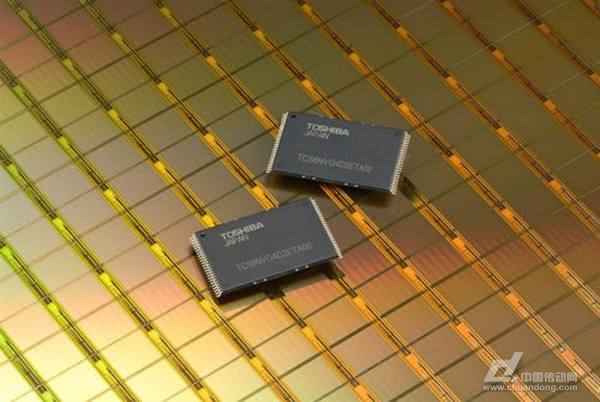[How long does it take for Chinese storage chips to break the monopoly of the US, Japan and South Korea? 】 Due to the impact of Sino-US competition, especially the ZTE incident, domestic attention to the chip has been further increased, and in the memory chip with the three major memory chip companies Changjiang storage, Hefei Changxin and Fujian Jinhua's rapid advancement to see China's storage chip companies have the opportunity to break the current monopoly of US, Japanese and Korean companies, but it will take time to break this situation.

US, Japan and Korea monopoly memory chip market
There are two main types of memory chips: DRAM and NANDflash. Among the products we commonly see today are DRAM memory sticks and SSD hard disks for PCs. These two types of products are widely used in various industries, and with The importance of these two types of products is growing, and the price of memory chips has continued to rise since 2016, and Samsung, the world's largest storage chip company, has beaten Intel in the semiconductor market to win the world's largest semiconductor company for the first time. position.
In the DRAM chip market, the share is mainly owned by Samsung, SK Hynix and Magnesium. They account for 44.5%, 27.9%, and 22.9% of the market respectively. The three companies together account for about 95% of the global DRAM market. 3%, Huaya Branch of Taiwan, China and other countries have a small market share.
In the NANDflash market, there are six major companies, namely Samsung, Toshiba, Western Digital, Magnesium, SK Hynix, and Intel, with market shares of 37.0%, 18.0%, 16.6%, and 12.1%, respectively. 9.9%, 5.9%, the six companies together account for more than 99% of the market.
In the DRAM and NANDflash markets, Korean companies have shown a strong position. In particular, Samsung has become the biggest beneficiary of the rise in memory chip prices in the past two years due to its dominant market position. It is gaining profits by increasing its investment. His own technological leadership, which in turn further strengthens its market share advantage. In the NANDflash market, Intel has brought a large impact to the market through the 3dxpoint storage technology developed by Magnesium, which has become the main driving force for its market share.
Progress of China's storage chip companies
Among the three domestic storage chip companies, Changjiang Storage has the largest investment scale. It is reported that its total investment will reach US$24 billion. At present, the NANDflash chip factory of Changjiang Storage has begun to move into production equipment and is expected to be put into production by the end of the year. The ambition of the Yangtze River storage is not limited to NANDflash, it also intends to invest in DRAM, and will enter the industry in the future.
Hefei Changxin and Fujian Jinhua invested in DRAM production. Hefei Changxin's progress is faster. Currently its DRAM chip factory has moved into production equipment and is expected to be put into production by the end of the year; Fujian Jinhua's DRAM factory is expected to move into production equipment next month, but in terms of production schedule Faster, said that it is also trying to put into production this year.
The technical talents of China's three major memory chip companies are mainly from Japan, South Korea and Taiwan. The COO of Qijiang Storage is the former chairman of the former Huaya Branch. After the collapse of the Japanese storage chip company Elpida, some of its talents entered Hefei Changxin, Hefei. Chang Xin also dug Liu Dawei, former senior vice president of Huaya Branch, and Fujian Jinhua obtained DRAM technology through cooperation with UMC of Taiwan.
It will take time to break the monopoly of the US, Japan and South Korea.
Chinese storage chip companies are still lagging behind the US, Japan and South Korea companies in terms of technology. The NANDflash chip that Changjiang Storage expects to put into production at the end of the year is 32-layer technology, while foreign companies have put into production 64-layer technology. Currently, domestic storage chip companies are actively promoting 96-layer technology and are expected to start production next year.
In terms of DRAM technology, Samsung is advancing the production technology of 18nm process. The starting point of Hefei Changxin and Fujian Jinhua is expected to adopt 19nm process when it is put into production, indicating that these two memory chip companies intend to enter the market. High technology strives for domestic customer support.
China is the world's largest manufacturing country. The purchase of memory chips accounts for about 20% of the global memory chip market. Such a huge market also has huge demand for low-end memory chips, which is conducive to the development of domestic storage chip companies. However, domestic storage chip companies will face technical improvement and yield improvement after they put into production. Whether they can enter mass production on schedule is the next problem they face. At the same time, the price of memory chips is cyclical, and the current high price can continue. How long is the problem, if the price drop of Chinese storage chip companies after they are put into production will cause them to face profit problems.
However, in any case, the efforts of China's storage chip companies will increase the favorable conditions for China's manufacturing industry to reduce costs. From the previous LCD panels and other industries, it can be seen that with the strengthening of China's industrial chain, foreign industrial chains will give Chinese brand enterprises more More support and price concessions are also more assured in terms of capacity supply. China should unswervingly support the development of the memory chip industry.
Cbd Vape Products Oem,D8 Vape Pen Oem,Cbd Disposable Vape Pen Oem,China Cbd Vape Products Oem
Shenzhen MASON VAP Technology Co., Ltd. , https://www.disposablevapepenfactory.com
